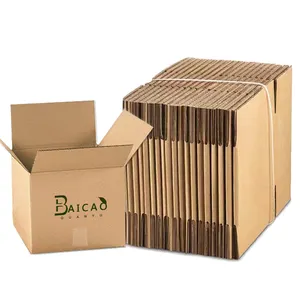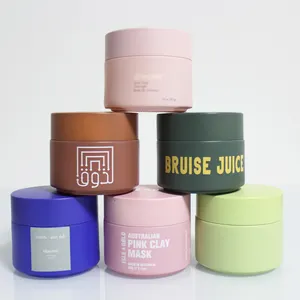Popular in your industry


























































Top categories
About carbonating bottles
Introduction
Imagine transforming your ordinary water into a fizzy, refreshing beverage right at your home. Welcome to the world of carbonating bottles, a revolutionary tool that lets you create your own carbonated drinks. This article delves into the science of carbonation, the magic of carbonating bottles, and the numerous benefits they offer. From environmental impact to health benefits and economic advantages, we explore how these bottles can change your beverage experience. We also guide you on choosing the right carbonating bottle, using it effectively, and maintaining it for longevity. Let's embark on this effervescent journey together.
Understanding Carbonation
Carbonation is a fascinating process that involves dissolving carbon dioxide (CO2) in water. This process requires two conditions: low temperature and pressure. CO2 dissolves better in cold water, and the higher the pressure of the CO2 gas, the more quickly and completely it will dissolve into the water. The process of carbonation also alters the taste of the water, creating a sharp, tangy flavor due to the formation of carbonic acid when CO2 reacts with water. This acid gives fizzy water its appealing bite and also has a mild antibiotic effect, preventing bacteria growth.
The Magic of Carbonating Bottles
Carbonating bottles work by infusing water with carbon dioxide gas under pressure, creating the fizzy texture we love in carbonated beverages. The process involves using a CO2 tank or charger, cold water, and a sealed container. Once the pressure is built, the carbonated water is ready to be served. The carbonation process changes the taste of the water due to the formation of carbonic acid when carbon dioxide dissolves. This method can be easily done at home, providing a convenient way to enjoy carbonated water anytime.
Benefits of Using Carbonating Bottles
Using carbonating bottles can revolutionize your beverage experience. You can spend less on store-bought sparkling water, as making your own at home costs about $0.2 to 0.3 per glass. You can avoid artificial chemical flavorings and sweeteners present in store-bought variants. Moreover, using a home carbonator reduces the usage of aluminium cans, which often end up in landfills, thus contributing to environmental conservation. However, it's important to note that the sparkling water made using a home carbonator cannot be stored for long as it quickly goes flat.
Environmental Impact
Using a home carbonator has environmental benefits. The reusable glass or heavy-duty plastic bottle that comes with such machines has far less impact than the mountain of disposable plastic bottles or cans you’d otherwise generate. You’re also eliminating the need to ship loads of liquid across the country, since you’re using the water from your own tap. Transporting CO2 cartridges has an impact too, but they weigh a lot less than bottles of water and you’ll get far more glasses of fizz out of each one.
Health Benefits
Carbonated water can be a healthier alternative to sugary drinks, providing hydration without the extra calories. It can help with weight loss, as it satisfies thirst and can reduce feelings of hunger. Some studies suggest it can improve digestion and reduce constipation. However, it's important to choose carbonated water without added sugars or artificial sweeteners. Also, some people may experience gas and bloating from excessive consumption. Carbonated water has no negative effect on bone health, unlike dark colas. You can even make your own carbonated water with a carbonating bottle, ensuring no added sugars.
Economic Advantages
Switching to carbonating bottles can lead to significant economic advantages. For instance, using a home carbonator can save you a significant amount of money each year, depending on your consumption. The cost of a single CO2 cartridge, which can produce a large number of cans of seltzer, is relatively low. This means you'll spend only a small amount for every 12 ounces of sparkling water made at home. Even with the upfront cost of the machine, the savings are substantial. This makes carbonating bottles a cost-effective choice for seltzer lovers.
Choosing Your Carbonating Bottle
When choosing your carbonating bottle, consider factors like power source, carbonation type, versatility, and size. Soda makers usually have a similar design with a bottle to fill with your desired drink that attaches to the soda maker itself. In the machine is a CO2 cylinder that releases gas into the bottle, forming bubbles and adding carbonation to the drink inside. The cylinder needs to be replaced once the CO2 is depleted. Some models offer different carbonation levels and can be used to carbonate almost any drink, including wine and juices. However, some models may require an outlet for use, or may foam up a lot while using.
Key Features to Consider
The multi-use carbonating bottles are a key consideration for any beverage enthusiast. Made from BPA & BPS free, high strength plastic, they are designed to withstand the pressure of carbonating sparkling water. These long life bottles are reusable up to three years, keeping drinks fresh and fizzy longer than store-bought carbonated drinks. Their durability and ability to maintain carbonation make them a standout choice.
Top Models
The market offers a variety of carbonating bottles, each with unique features. Some offer multiple carbonation levels and require an outlet for use. Others are sleek, compact, cordless models, but they might not include a CO2 cylinder. Some can carbonate almost any drink, though they can get a bit messy. There are vintage-inspired models with well-designed spouts, and environmentally friendly models with lovely designs. Each model has its pros and cons, so choose according to your needs.
Using Your Carbonating Bottle Effectively
To effectively use your carbonating bottle, it's crucial to understand the role of priming sugar in carbonation. If you find your beverage lacks fizz, you might consider adding more priming sugar. However, be cautious. Adding too much can lead to over-carbonation, potentially causing the bottle to explode. Also, remember that the type of sugar used can impact the carbonation process. For instance, honey can be unpredictable as a priming sugar. Instead, consider using table sugar or cane sugar. Lastly, ensure your bottles are stored in a warm environment to encourage yeast activity, but avoid direct sunlight.
Safety Precautions
Safety is paramount when using carbonating bottles. It's important to adhere to safety precautions when using carbonating bottles to avoid any potential risks.
Maintenance and Care
Maintaining your carbonating bottles is crucial for their longevity and performance. It's important to note that these bottles should not be placed in the dishwasher, as exposure to extreme heat can compromise their integrity. The only exception is if you have a dishwasher-safe model. This careful approach to cleaning ensures the durability of your carbonating bottles, providing you with a long-lasting, efficient tool for your beverage carbonation needs.
Conclusion
Carbonating bottles have truly revolutionized the way we consume beverages. They offer a convenient, cost-effective, and environmentally friendly way to enjoy carbonated drinks at home. Not only do they provide a healthier alternative to store-bought drinks, but they also contribute to waste reduction. Choosing the right model based on your needs, using it effectively, and maintaining it properly can ensure a long-lasting, satisfying carbonation experience. Despite the need for safety precautions, the benefits of carbonating bottles are undeniable. So, why wait? Start your fizzy adventure today and elevate your beverage experience to a whole new level.





























